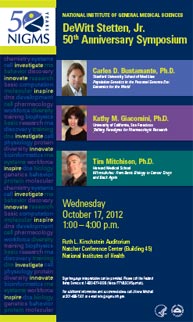Communication and transparency are core values of NIGMS, and the Feedback Loop is one way we put those values into practice. On the occasion of our 300th blog post, we take a moment to look back, look ahead, and look for your continued input.
Our former director, Jeremy Berg, started the Feedback Loop in 2005 as an e-newsletter distributed three times a year. In 2009, we switched it to a blog format to share information in a timelier way and provide a better platform for discussion. Since then, more than 50 NIGMS staff members have contributed posts announcing funding opportunities, meetings and job openings; offering application guidance and tips; sharing funding trend data and other analyses; and more.
Whether posted on the blog or addressed to me or other staff, your comments and questions have helped us provide or clarify information about the funding process and other topics important to you.
Since we created this blog, a number of other NIH components have started blogs of their own. Sally Rockey of the NIH Office of Extramural Research has been blogging for nearly 2 years on Rock Talk about grant policies, funding trends and other issues of interest to the extramural research community. And earlier this month, Francis Collins launched the NIH Director’s Blog to highlight recent discoveries in biology and medicine. We look forward to new opportunities for synergy with these and other blogs.
Above all, we hope you find the Feedback Loop a useful resource. As always, we welcome your comments, input and feedback on topics for future posts or other ways the blog can best meet your needs.






 . The tool makes it easy for grad students and postdocs to examine their scientific skills, interests and values; identify scientific career paths that best match their skills and interests; and set goals for the coming year. The site also links to articles for early career scientists to use as they plan their future.
. The tool makes it easy for grad students and postdocs to examine their scientific skills, interests and values; identify scientific career paths that best match their skills and interests; and set goals for the coming year. The site also links to articles for early career scientists to use as they plan their future.
